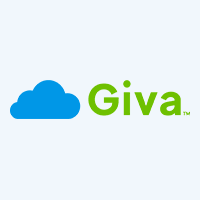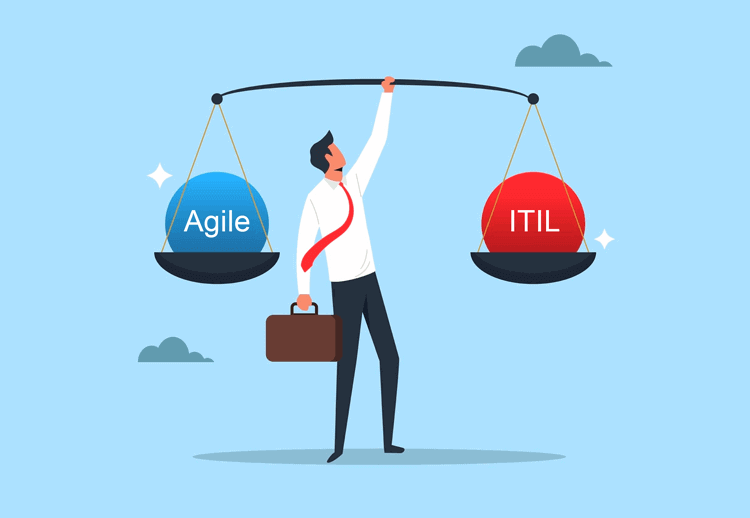What is First Call Resolution (FCR): Why It’s a Critical KPI Metric Plus How to Improve It
One of the most important metrics and Key Performance Indicators (KPIs) in any help desk or customer service call centers worldwide is First Call Resolution (FCR).
Whether you're providing broadband and phone services or IT Service Management (ITSM), customers want quick responses and resolutions when they've encountered a problem. Team leaders measure this using First Contact Resolution. Of course, there are other key metrics too, such as Customer Satisfaction scores (CSAT), Customer Effort Scores (CES), and numerous others. However, FCR is a globally-recognized benchmark help desk or call center metric that impacts your entire customer service operation.
Let's take a closer look at what this means and how to measure and improve FCR times.

What Does First Call Resolution (FCR) Mean?
First Call Resolution (FCR) means a team's ability to meet the customer's need at the first point of contact. It is also known as First Call or First Touch Resolution.
An ideal FCR scenario is:
- A customer has a problem
- They've looked at your self-serve articles, knowledge base, FAQ's, troubleshooting, and any other resources provided
- Regrettably, an answer isn't to be found, or they don't have time to look
- The customer contacts your IT or customer service team (whether via Live Chat, putting in a support ticket, email, or phone)
- An agent resolves the problem at this first point of contact, quickly, and the customer is happy
When FCR goes wrong, customers need to call back to get their issues resolved. Not only is this frustrating for customers, but it also adds more work to already overworked teams. Increased workloads result in increased costs and a reduction in customer satisfaction rates.
Unhappy customers will take their business elsewhere. Costs increase, and so do churn rates, causing businesses to lose customers. They are also more likely to vent their frustration on social media and tell other people, causing reputational damage.
When FCR rates are high, everyone wins:
- Customers have a better overall customer experience and give better customer feedback
- There are fewer repeat calls
- Churn rates stay low
- Agent productivity increases
- Lower-level tech support is needed less often
- There's a better possibility you can upsell happy customers on other products and services.
How Do You Measure Your First Call Resolution Rate?
Every organization measures FCR in different ways. After all, there are numerous factors at play:
- Does it still count as a first contact resolution if it needs to be escalated and another agent calls the customer back?
- What if a customer needs to be transferred to another team or department, and they resolve the issue?
- What if an agent calls through to the wrong department and needs to contact the customer back?
The beauty of this is customer service and IT leaders get to decide what counts as "first contact resolution," so agents and the whole department aren't being unfairly monitored against a metric that's impossible to achieve. It might take some tweaking to get this right.
Once how you measure FCR rates has been decided and it's been clearly defined, consistency is critical.
Calculate FCR this way:
Total number of successful FCR calls or tickets / Total number of calls or tickets = FCR
Want to know what your organization's FCR rate is? Try out our First Call Resolution Calculator Tool.
What Is a Good First Call Resolution Rate?
Ideal First Call Resolution rates vary across industries. SQM Group notes that most customer service and IT support teams see an average FCR of 70% to 79%, with the best operations reaching 80% or higher, but what qualifies as "good" depends heavily on the complexity of the service being delivered.
For example, an e-commerce team may handle straightforward issues such as returns or order tracking, which naturally allows for higher FCR scores. On the other hand, technical support organizations such as telecom or IT Service Management often face complex issues requiring levels of troubleshooting, which makes FCR much harder to achieve.
In the end, teams should define their own goals based on industry, their customers, and their support team's scope of responsibility.
Common Challenges in Achieving High FCR
While the benefits of strong FCR are clear, getting there can be difficult. Common challenges include:
- Very Complex Issues: Some customer problems are too technical or multi-layered to resolve at the first touch
- Limited Customer Data: Without access to complete account histories, agents may struggle to solve problems quickly
- Knowledge Gaps: Outdated or poorly structured internal resources such as knowledge bases prevent agents from finding the right answers
- Conflicting KPIs: Pressure to reduce handle times can force agents to choose speed over resolution, increasing FCR
Best Practices for How You Can Improve Your FCR
There are numerous ways organizations can improve First Call Resolution scores:
- Examine the Entire Customer Journey: Start by asking how many "first calls" are actually the customer contacting you because they cannot self-help in the first place. Use that information to improve FAQs, knowledge bases, and online troubleshooting resources.
- Turn Recurring Issues Into Self-Help Answers: If the same types of calls keep coming in, document them in your self-service system.
- Strengthen the Internal Knowledge Base: Provide your agents quick access to accurate information, so they can solve issues without putting customers on hold or escalating unnecessarily.
- Empower Frontline Agents: Give tier-1 agents the authority and tools to handle a wider range of issues on their own.
- Leverage Analytics and AI: Call monitoring, speech recognition, and AI-driven suggestions help identify trends and offer real-time support to agents.
- Avoid Conflicting KPIs: As noted above, don't force agents to choose between speed and resolution. For example, an unrealistic Average Handle Time (AHT) requirement can discourage thorough problem-solving, hindering FCR.
First Call Resolution vs. Other Metrics
While the FCR metric is indeed important, we don't want to forget other KPIs, such as those mentioned at the top of this article, and how they relate to FCR, in order to provide a full picture of customer service performance.
We already noted FCR and AHT, but here are a few others:
- FCR vs. Customer Satisfaction Score (CSAT): High FCR usually improves CSAT, but if resolution takes too long, satisfaction may still suffer.
- FCR vs. Customer Effort Score (CES): A problem might be solved in the first contact, yet the customer may still feel the process was difficult.
- FCR vs. Net Promoter Score (NPS): High FCR supports loyalty by showing customers you value their time, but NPS captures long-term brand perception. For example, a customer might get their issue solved first call but still might not recommend the company if other factors such as product quality fall short.
The Future Is Now: How AI and Automation Impact FCR
Lastly, technology now plays a major role in driving higher First Call Resolution rates. AI-powered solutions such as chatbots, knowledge assistants, and intelligent routing help in the following ways:
- Suggest answers in real time while agents handle live interactions
- Automatically find similar past cases for quicker resolution
- Directing customers to the right team from the start
- Handle repetitive issues with self-service automation, leaving agents free to focus on complex cases
Conclusion: The Benefits of FCR Strategies
As FCR improves, the overall cost of providing customer support decreases.
Taking an example from the IT industry:
- Analysts estimate the mean cost to resolve a ticket on level one to be about $32 (e.g., Level 1 support tickets). Based on industry averages, the mean cost to resolve an escalated ticket is about $60.
- In an environment averaging 4,000 calls per month, improving FCR from 50% to 75% reduces the number of tickets requiring escalation by 1,000 per month. The total cost to support those tickets is also reduced, generating an estimated savings of $28,000 per month based on current ITSM industry averages.
- Improving FCR reduces costs and churn and has a positive impact on CSAT and other scores.
For an in-depth study of this and other proven techniques to drive first-call resolution at the service desk and add value to your organization, read Giva's Guide Service Desk Optimization: 40 to 80 in No Time Flat.
Giva Can Help Your FCR Rates
Giva's Help Desk, ITSM Service Desk and Customer Service SaaS solutions is perfectly equipped to help organizations improve FCR scores and metrics. Giva provides real-time monitoring of customer requests. Nothing is ever overlooked.
Collect and monitor all of the data your team and managers need to improve numerous KPIs, including FCR. Support front-line agents more effectively with an out-of-the-box SaaS-based solution for customer service and ITSM.
With Giva, you can target respond/resolve times, measure KPIs, and deliver excellent service consistently.
Since 1999, Giva has delivered a top-notch cloud-based customer service software solution. See for yourself why our customers rate Giva's cloud solutions 4.9 out of 5 stars.
Get a demo to see Giva's solutions in action, or start your own free, 30-day trial today!





